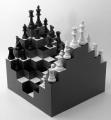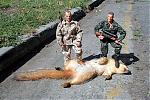Bill mentioned the above earlier. Someone else mentioned that per FM 3-24 that in COIN you must accept some risk to put the population less at risk. Wanat was simply too much risk for too little population.In COIN the key terrain is the populace, and failure to control it puts you in an unwinnable situation. The populace is the key terrain that the insurgent and a good counterinsurgent is struggling to control.
But even at Wanat, a fully HESCO'd COP farther from buildings may have helped as would additional RSTA assets taken from the unit the final days...not by the C-o-C that was accused of negligence. And it was not higher headquarters' fault either. Sufficient assets did not exist in country. Secretary Gates has made rectifying that a major priority.
METT-TC and Troop Leading Procedures are essential training skills. But Civil Considerations is part of METT-TC as is its planning tool ASCOPE. Operational variables of PMESII-PT are a key consideration at brigade level and above. Additional RSTA assets can assist evaluation of all these variables while also providing area security, QRF, and precision fires close to friendlies and civilians.
Sustainment of small units is enough of a nightmare in Afghanistan. Making the most of available personnel would seem to indicate dispersion of available personnel to influence key populations. That appears to be exactly what some SF units do. They too take risk. But for GPF it would seem you require sufficient personnel to secure the base and patrol. COPs and HESCO assist that while providing an accessible location for resupply and secure rest.

















Bookmarks